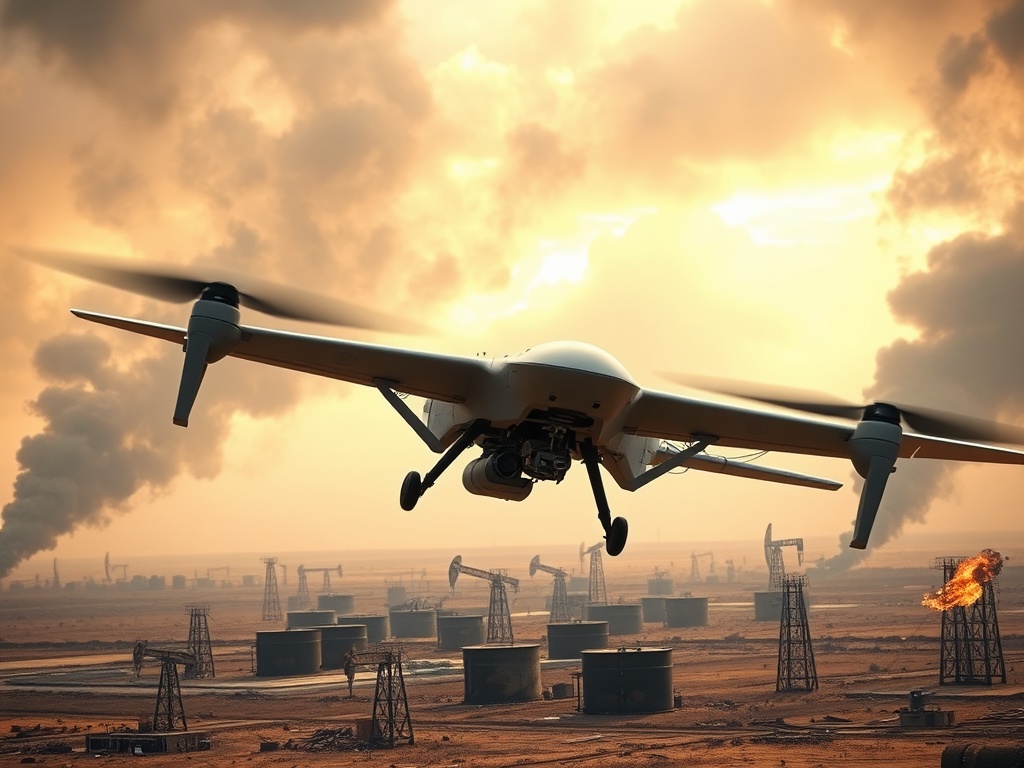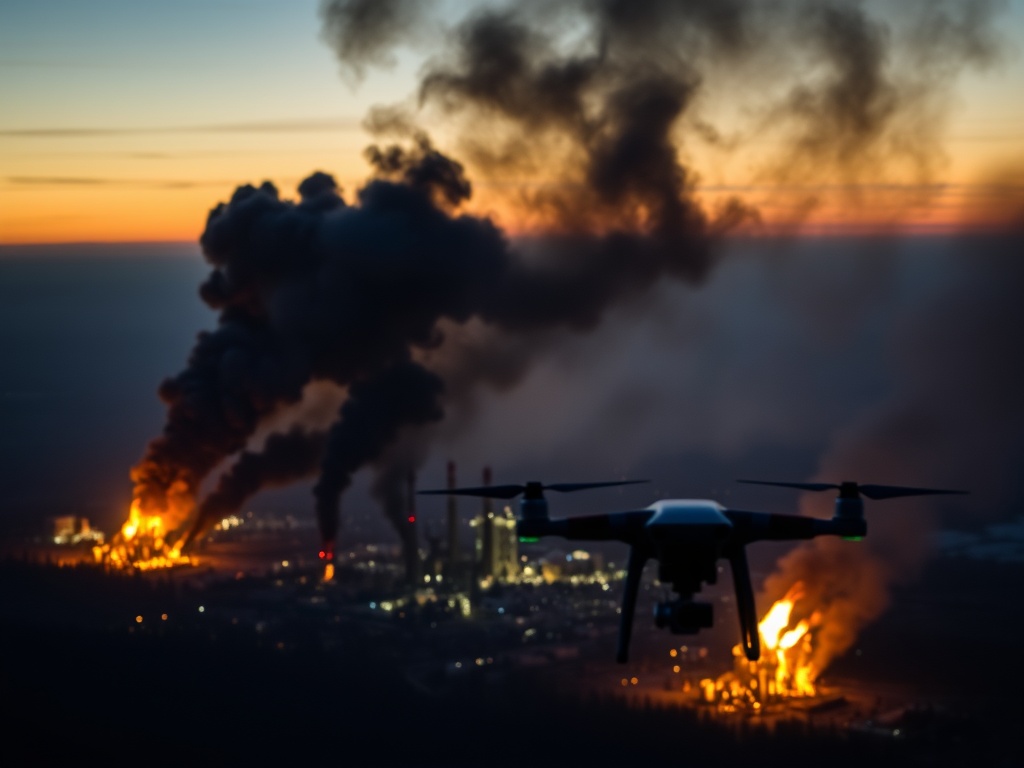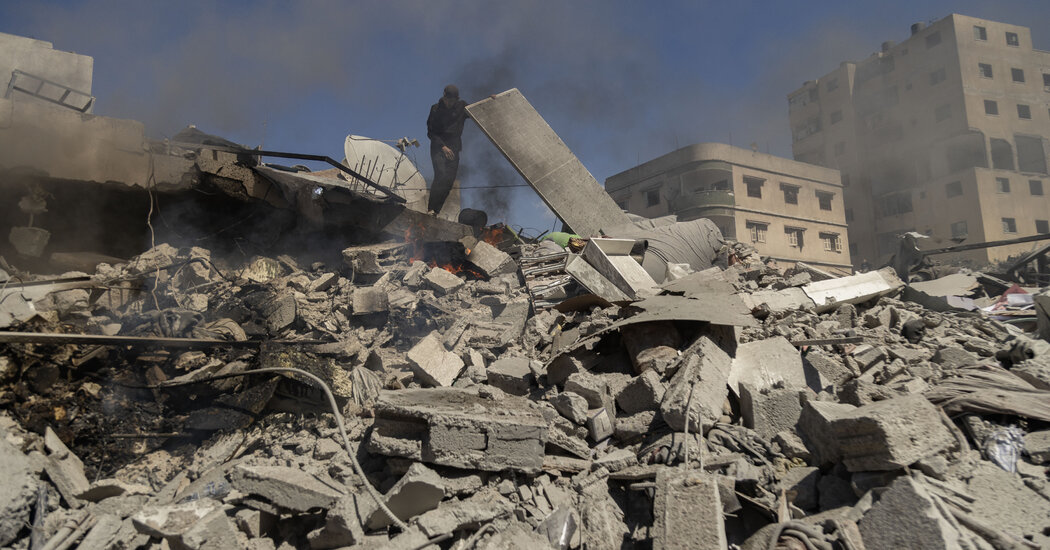Recent satellite imagery obtained by The i Paper has unveiled the extensive destruction wrought by Ukraine’s escalating drone offensive against Russia’s oil infrastructure. As the conflict enters its third year, Ukraine has altered its strategy, moving beyond the immediate front lines to strike deep into Russian territory, targeting the crucial fuel lifeline that sustains Moscow’s military operations. Both Kyiv and Moscow have intensified their drone assaults in recent months, yet Ukraine finds itself increasingly frustrated with the reluctance of Western allies to target Moscow’s energy revenues directly.
What began as a limited series of long-range drone strikes in January 2024 has rapidly escalated into a comprehensive campaign aimed at crippling Russian oil refineries and storage facilities. The initial significant strike occurred in Klintsy, a town within Russia’s Bryansk region, where a Ukrainian drone attack ignited flames in four oil tanks at a vast storage facility. Satellite images now reveal the full extent of the devastation, with eight oil tanks engulfed in a thick plume of black smoke. This attack marked the beginning of a broader Ukrainian strategy focused on debilitating Russia’s energy supply to disrupt its military capabilities. The campaign has since expanded across various Russian territories, with satellite imagery documenting significant damage to oil refineries in at least seven different locations.
Satellite Imagery Reveals Damage to Russian Oil Depots and Refineries
According to The i Paper’s analysis, Ukraine has executed more than 80 strikes on Russian oil facilities. While initial assaults had a limited effect, the recent surge is now disrupting Russian fuel exports, thereby depriving the Kremlin of essential revenue for its military endeavors, as claimed by Ukrainian officials. On 11 October 2024, significant damage was reported at an oil depot in Astakov, Rostov Oblast, Russia (Photo: Mazar).
One of the most devastating attacks occurred on 15 January, when Ukrainian drones targeted a Rosneft oil base in Liski, located in Russia’s Voronezh region. Satellite images indicate that six oil tanks were destroyed, resulting in a 50% reduction in production and cutting diesel output by approximately 10,000 tonnes per day. Just days before this, a fire at a refinery in the city of Engels blazed for five consecutive days, compelling local authorities to declare a state of emergency.
In the Rostov region of Russia, an oil depot continued to burn for several days following a drone strike on 23 August, with up to 20 diesel fuel tanks, each capable of holding 5,000 cubic meters, engulfed in flames. Additionally, Ukrainian forces have targeted the Syzran and Ilsky oil refineries in Krasnodar Krai, igniting large-scale fires. Further complicating Russian military logistics, the Kropotkinskaya and Andriapol oil pumping stations have been rendered inoperable, severely disrupting fuel supplies to Russian troops.
Divided Global Response
As Ukraine intensifies its drone strikes, the previously unified Western response appears to be fracturing. In Europe, Britain and its allies are moving closer to direct involvement in the conflict. Discussions are underway regarding a European “reassurance force” in Ukraine, with plans to deploy up to 30,000 British and EU troops to strategic locations away from the front lines. The UK government has already imposed sanctions on 20 Russian oil tankers, a measure anticipated to slash Russia’s crude exports by over four million barrels.
Conversely, the United States is moving in the opposite direction. President Donald Trump has positioned himself as a potential ally to Moscow, openly labeling Ukrainian president Volodymyr Zelensky as a “dictator” and suggesting that Ukraine should concede territory to Russia. Trump has also proposed easing sanctions on Russia, a move that experts warn could undermine the impact of Ukraine’s oil strikes by alleviating financial pressure on Putin’s wartime economy.
Following a Ukrainian drone strike in Liskinskaya Oblast, Russia on 6 October 2024, the aftermath was captured in satellite imagery (Photo: Maxar). This strike was part of a series of precision attacks targeting strategic military and fuel-energy infrastructure within the Russian Federation.
Can Putin Withstand the Pressure?

As a result of Ukraine’s drone assaults and ongoing Western sanctions, Russian seaborne oil product exports plummeted by nearly 10% in 2024, as reported by Reuters. The country’s refineries are also facing additional pressures from declining fuel prices, rising interest rates, and a ban on fuel exports implemented to secure domestic supply. Just last week, Kyiv sustained its offensive on the Syzran oil refinery, while also targeting vital military and fuel-energy infrastructure facilities within Russia.
Although Ukraine faces challenges on the battlefield, its campaign against Russia’s energy sector remains relentless. With divisions emerging among Western powers, the pivotal question looms: will Putin be compelled to yield, or will a fractured international response provide him with a crucial lifeline?




